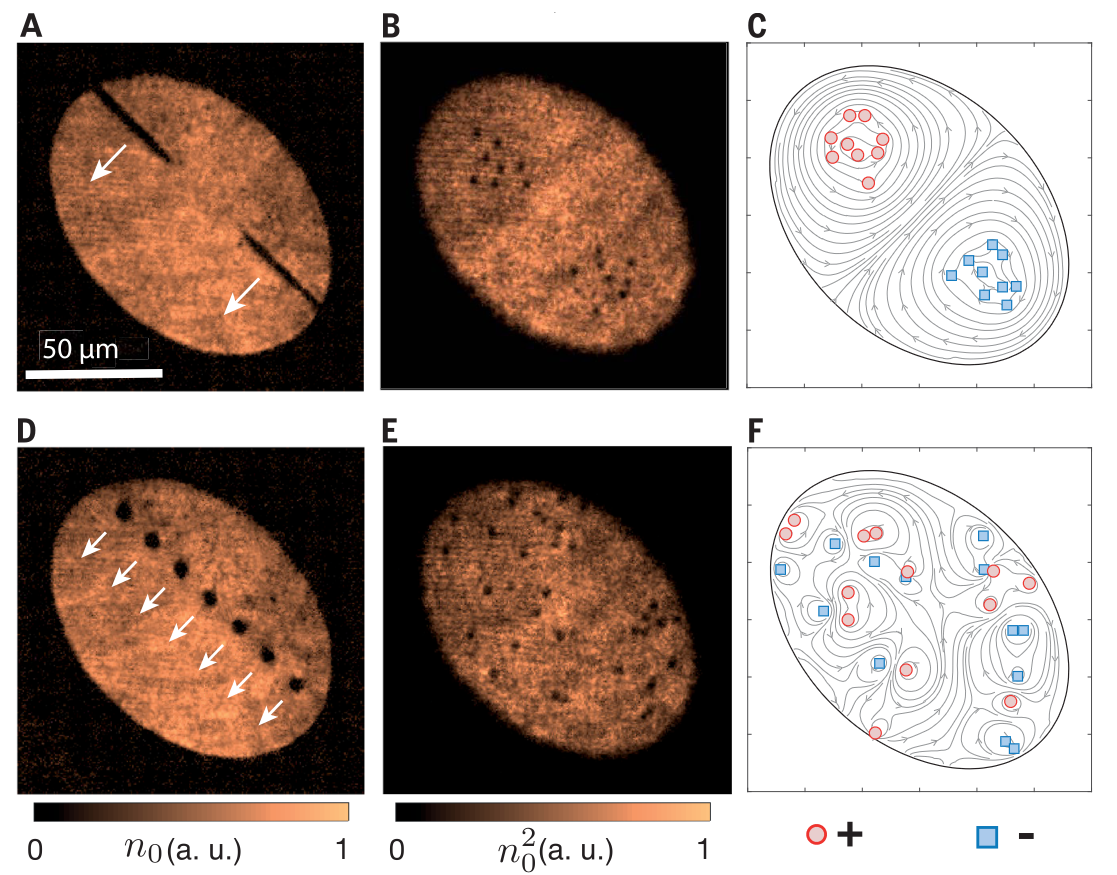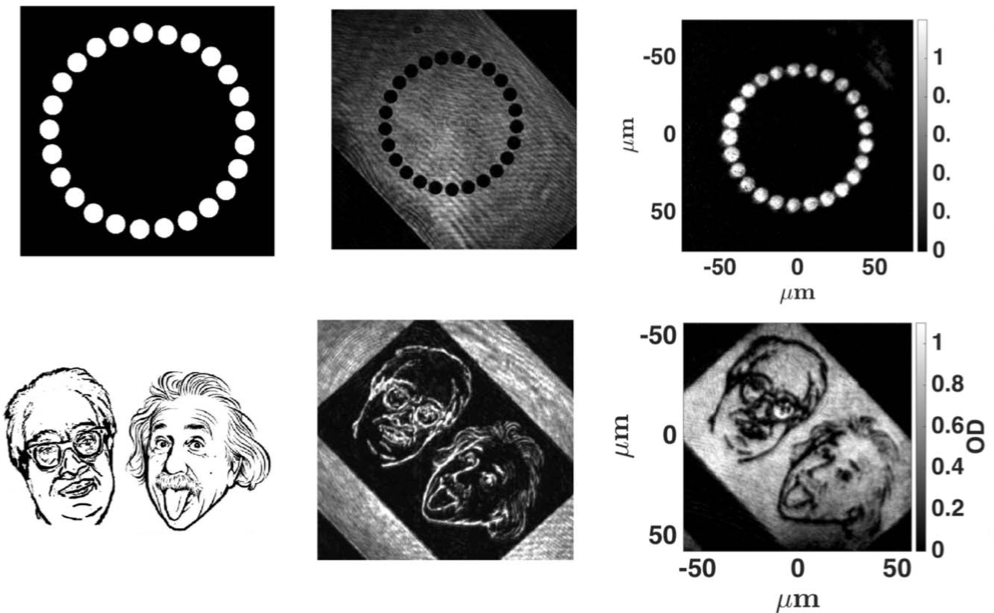
Digital Micromirror Patterned Scalar BECs
Fully operational since 2016, this apparatus is built around a small glass vacuum cell that allows high-resolution patterning of confining potentials and imaging of resulting atom configurations, while producing large atom number condensates (4 x 10⁶). We trap atoms in a combination of optical and magnetic fields, with optical confinement given by a 2560 x 1600 digital micromirror device (DMD). The achieved high resolution of the microscope objectives allows us to pattern the density of our BECs with high precision.
We can use these high resolution DMD patterns to print arbitrary time independent and dependent potentials on our BECs. Besides sculpting atoms into the world’s smallest art, we utilise this technique to study:
Superfluid turbulence: In an effort to understand classical turbulence better, we study the behaviour of superflow and quantised vortices and study superfluid analogues of classical turbulence phenomenas.
Superfluid transport & Atomtronics: A common use for superfluids is to be used as an emulator. We use BECs to create objects analogous to classical systems such as electrical LC-circuits and acoustical resonators.
Quantum sensing: Quantum systems can be used for sensing applications. In many scenario’s, the quantum mechanical behaviour of a system holds an advantage over the classical equivalent. This can be used, for example, to make rotation sensors.
Quantum thermodynamics: The energy used in information technology currently accounts for 8% of the electricity use on Earth, and is doubling every 10 years. Quantum thermodynamics can be utilised to make electrical devices more efficient. Our aim is to experimentally verify some of the theoretical predictions of quantum thermodynamics in an effort to translate theory into applications.
This apparatus currently utilises 87Rb, but we aim to implement 41K in the near future. The presence of two species will allow us to greatly expand the scope of research on the above topics.
Interested in any of these topics? See the Join Us page for available projects or contact Dr. Tyler Neely.
Publications
Staff
In addition to this experimental apparatus, our lab also studies spin phenomena in our Spinor Apparatus. There are also several BEC experiments that reached the end of their natural lifetime and have since been replaced by a new apparatus. Click here to see our Retired Experiments.















